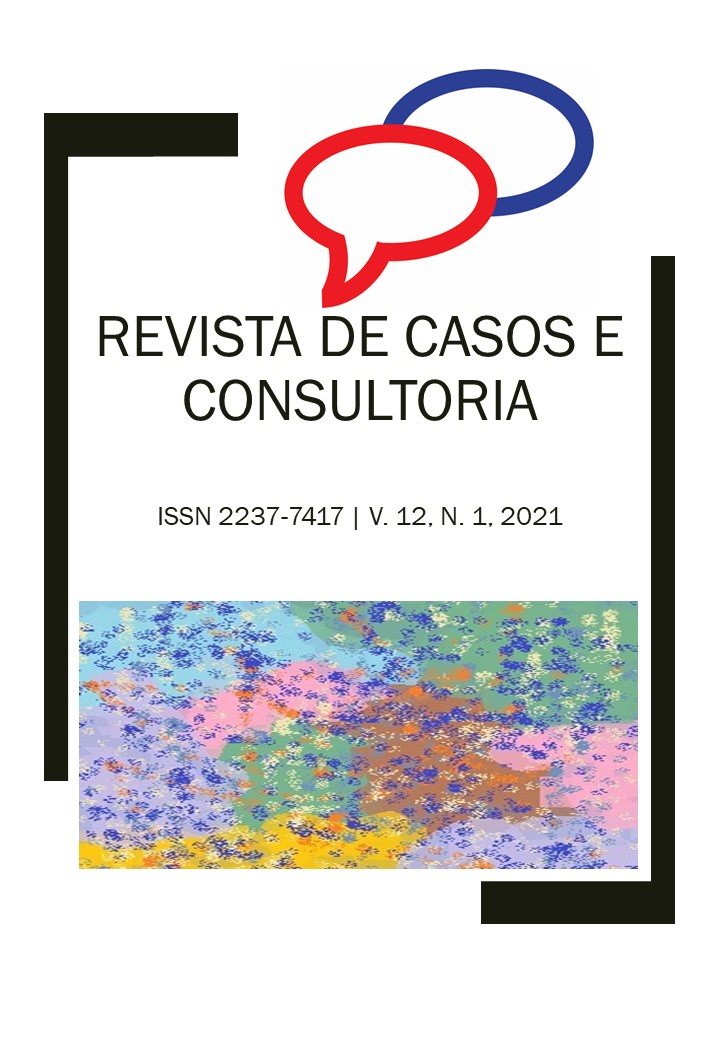Prevalence of cesarean sections in public and private services in the municipality of Picos Piauí
Keywords:
Cesarean; Obstetrics; women's health.Abstract
This research aims to analyze the rates of cesarean sections in the public and private sectors of the city of Picos-PI, in order to identify the gestational age at which this type of surgery most occurs, in addition to evaluating the prevailing Apgar score in newborns. born whose delivery was cesarean. This is a descriptive and cross-sectional study with a quantitative approach, developed in two hospitals in the city of Picos/PI, one public and the other private. The sample consisted of data from 1,630 women who underwent elective or emergency cesarean sections from 2017 to 2018. Data were collected through a spreadsheet between the period December 2019 to January 2020. The study allowed to highlight, through the records, a prevalence of cesarean sections in the public hospital (92.6%) and only (7.4%) in the private sector. As for the sociodemographic characteristics, it was possible to observe a prevalence of women aged between 19 and 29 years, 923 (261.1%) in the public hospital and 71 (59.2%) in the private hospital, revealing a predominance of adult women in the performance of the Cesarean delivery. Regarding education, it is clear that in the public hospital, most women attended high school 726 (48.1%) and in the private hospital 83 (69.2%) attended higher education. As for marital status, it was possible to observe that in the public hospital, 751 (49.7%) of the women were in a stable relationship and in the private hospital 84 (70%) were married. With regard to the occupation of women undergoing cesarean section, Table 1 shows that in the public sector 1009 (66.8%) were farmers and in the private sector 65 (54.2%) had a steady job. Regarding gender, in the public sector, most babies born by cesarean delivery were male 815 (53.4%) and in the private sector, 63 (52.1%) were female. With regard to gestational age, both in public and private hospitals, most newborns were born at term between 38 and 41 weeks. Regarding the apgar index in the first minute of life, the score between (7-10) in the public hospital 1473 (96.5%) and in the private one 116 (95.9%) prevailed. there was a predominance of the index between (7-10) in the public hospital 1506 (98.7%) and in the private 121 (100%). Given the above, this research serves as an important instrument to boost awareness of health professionals in performing cesarean sections only when clinically indicated, especially in hospitals where the research was conducted.
Downloads
References
AGÊNCIA NACIONAL DE SAÚDE SUPLEMENTAR. Cartilha nova organização do cuidado ao parto e nascimento para melhores resultados de saúde: Projeto Parto Adequado-fase 1. p.49.2016.
ALONSO, Bruna Dias. Fatores associados à cesariana segundo fonte de financiamento na Região Sudeste: estudo transversal a partir dos dados da pesquisa “Nascer no Brasil: Inquerito Nacional sobre parto e nascimento”, 68p. Dissertação, Faculdade de Saúde Pública da Universidade de São Paulo, 2015.
BARBOSA, Gisele Peixoto et al. Parto cesário: quem o deseja? Em quais circunstâncias? Caderno Saúde Pública, v. 19, n. 6, p. 1611-1620, nov/dez 2003.
https://doi.org/10.1590/S0102-311X2003000600006
BRASIL. Instituto Brasileiro de Geografia e Estatística (IBGE). População, Ministério da Saúde (2010).
BRASIL. Sistema de Informações sobre Nascidos Vivos. SINASC. 2016.
_______. Ministério da Saúde. Atenção ao pré-natal de baixo risco. 5º ed. (2012).
_______. Ministério da Saúde. Atenção à Saúde do Recém-nascidos. 2º ed. (2012).
_______. Ministério da Saúde. Triagem neonatal biológica. 1º ed. (2016).
_______. Ministério da Saúde. Uma análise da situação de saúde e os desafios para o alcance dos objetivos de desenvolvimento sustentável. 1º ed. (2018).
_______. Ministério da Saúde. Diretrizes de atenção à gestante: a operação cesariana. (2016).
_______. Resolução 2.144, de março de 2016. Diário oficial da união: Seção 1, Brasília, DF, n. 118, 22 jun. 2016.
CÂMARA, Raphael et al. Cesariana a pedido materno. Revista Colégio Brasileiro de Cirurgiões, v. 43, n. 4, p. 301-310, 2016.
http://dx.doi.org/10.1590/0100-69912016004002
DOS ANJOS, Cinthia de Souza; WESTPHAL, Flavia; GOLDMAN, Rosely Erlach. Cesárea desnecessária no Brasil: Revisão integrativa. Enfermagem Obstétrica, v.1, n.3, p.86-94,2014.
FERRARI, Anna Paula; CARVALHAES, Maria Antonieta de Barros Leite; PARADA, Cristina Maria Garcia de Lima. Associação entre pré-natal e parto na rede de saúde suplementar e cesárea eletiva. Revista Brasileira de Epidemiologia, v. 19, p. 75-88, 2016.
http://dx.doi.org/10.1590/1980-5497201600010007
FREITAS, Paulo Fontoura; SAVI, Eduardo Pereira. Desigualdades sociais nas complicações da cesariana: uma análise hierarquizada. Cadernos de Saúde Pública, v. 27, n. 10, p. 2009- 2020, 2011.
GIL, Antônio Carlos. Métodos e técnicas de Pesquisa Social. 6 ed. São Paulo: Atlas, 2010.
LEAL, Maria do Carmo et al. Avanços na assistência ao parto no Brasil: resultados preliminares de dois estudos avaliativos. Cadernos de Saúde Pública, v. 35, p. e00223018, 2019.
https://doi.org/10.1590/0102-311X00223018
PARENTE, Raphael Câmara Medeiros et al. A história do nascimento: cesariana. Revista FEMINA, v.38, n.9, p.481-486, 2010.
POLIT, Denise. F.; BECK, Cheryl Tatano. Fundamentos de pesquisa em Enfermagem: aplicação de evidências para a prática de enfermagem, 7. ed. Porto Alegre: Artmed, 2011.
PRODANOV, Cleber Cristiano.; DE FREITAS, Ernani Cesar. Metodologia do trabalho científico: Métodos e técnicas da pesquisa e do trabalho acadêmico. Novo Hamburgo, Feevale, 2ª ed. 2013.
SANTOS, Nilma Lázara de Almeida Cruz et al. Gravidez na adolescência: análise de fatores de risco para baixo peso, prematuridade e cesariana. Ciência & Saúde Coletiva, v. 19, p. 719- 726, 2014.
https://doi.org/10.1590/1413-81232014193.18352013
SILVA, Ana Carolina Lima et al. Preferência pelo tipo de parto, fatores associados à expectativa e satisfação com o parto. Revista Eletrônica de Enfermagem, v. 19, 2017.
https://doi.org/10.5216/ree.v19.44139
VELHO, Manuela Beatriz et al. Modelos de assistência obstétrica na Região Sul do Brasil e fatores associados. Cadernos de Saúde Pública, v. 35, p. e00093118, 2019.

 Português (Brasil)
Português (Brasil) English
English Español (España)
Español (España)